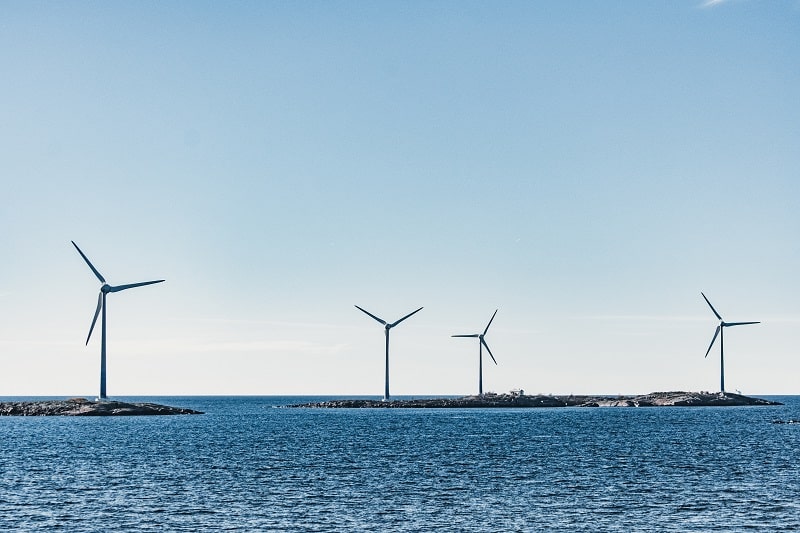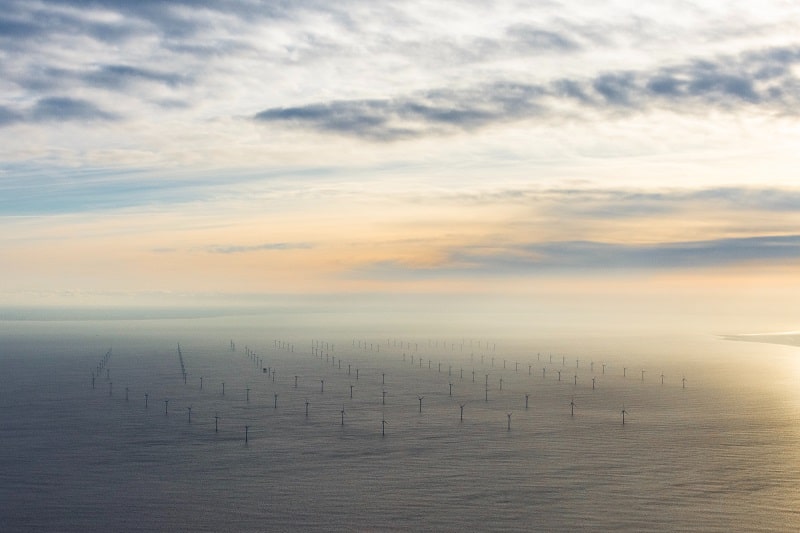California Is Taking a Lead in Offshore Winds
California broke a record in May 2022 on a beautiful, calm day with no interference. The state, using only the power of renewable energy, briefly exceeded its enormous consumer electricity needs. Despite the enormous progress the state has made investing in renewable energy, more work needs to be done, as seen by the natural gas power plants that continued to hum in the background as the state established this astounding milestone.
California, the second-highest energy consumer in the US, has the fifth-largest economy globally, is a leader in renewable energy, and has set a target to switch to 100% clean retail electricity by 2045. The state has a plan to catch up to — and even overtake — Atlantic states in the offshore wind game, even though they may have an advantage. The California Energy Commission recently set the target of building 3 to 5 gigawatts of offshore wind capacity by 2030, with the goal of 25 gigawatts by 2045. The second goal would provide enough electricity to supply 25 million families with what they need. According to CEC (California Energy Commission) Chair David Hochschild, "These challenging but doable targets are a significant signal of how dedicated California is to be bringing the offshore wind sector to our state."
As required by a bill passed in September of last year, this is the first stage in the commission's formulation of a strategic plan for offshore wind growth. The committee was entrusted by that law with figuring out how much offshore wind energy the state may theoretically produce between 2030 and 2045. It appears that they now have a solution.

And now to more static data: the draft report from May 6, 2022, suggested setting a 2030 preliminary planning goal of 3,000 megawatts. Instead, the CEC sets a preliminary planning goal range of 2,000 MW – 5,000 MW (2 GW – 5 GW) of offshore wind by 2030 to complete the strategic plan. Full development of the Morro Bay Wind Energy Area (WEA) or a combination of partial development of the Morro Bay WEA and Humboldt WEA might produce the upper end of this range. The strategic plan's overall 2045 preliminary megawatt planning goals were set at 10,000 MW to 15,000 MW in the May draft report, which recommended evaluating an additional 7,000 – 12,000 MW of offshore wind (10 GW to 15 GW). The CEC sets a preliminary planning goal of 25,000 MW (25 GW) for 2045 in response to the Governor's request to adopt a more ambitious aim and in light of new research and comments received.
The legislature must then receive the CEC's comprehensive offshore wind proposal around June 2023. The state will investigate any potential financial gains from wind energy development and design a strategy for coordinating wind farms and transmission permitting. If the objective is met, California will have established itself as the leader in offshore wind development. Despite the fact that the offshore wind sector is still in its early stages in California, no other state has been as ambitious in its long-term objectives. The state's offshore geography may also make reaching the targets difficult. Because the Pacific Ocean seabed is so deep off the coast of California, installing the infrastructure will necessitate the deployment of floating turbines, which have only been used in a few locations in Scotland and Portugal.

The Biden administration established a national objective of 30 gigawatts of offshore wind generation by 2030. The state may soon have access to two new offshore wind energy zones, which will assist the nation get closer to the Biden administration's targets of reaching 30 gigawatts of offshore wind energy by 2030 and carbon-free electricity by 2035. Much of the progress toward this goal has also occurred in the Atlantic, with two commercial-scale offshore wind projects already approved off the coast of New England and more planned. However, the Interior Department suggested the nation's first lease sale in May, identifying several suitable locations off the coasts of both central and northern California.
Researchers at the National Renewable Energy Laboratory (NREL) have determined the optimal approach to break up these offshore wind energy areas into discrete leasing zones, which is a first for the West Coast and required novel assessments of floating wind turbines. The U.S. Department of the Interior's Bureau of Ocean Energy Management (BOEM), which will make the final decision and soon plan to auction the sites to floating wind farm developers, will be informed by the review, which was released in a technical study. According to Aubryn Cooperman, NREL researcher, and the report's principal author, "Humboldt and Morro Bay will open up access to a new resource that might be a beneficial addition to other renewable power generating sources in California" as the first offshore wind licenses on the West Coast. Wind farms in these places "could be among the first commercial-scale floating wind farms in the world, spearheading the deployment of innovative technology that has the potential to provide clean energy to coastal regions around the world."
Wind energy zones were established in 2021 off the coasts of Morro Bay, which is midway between San Francisco and Los Angeles, and Humboldt, which is close to Oregon's northern border with California. These two regions will have the first offshore wind leases in California—and the whole West Coast—when they are auctioned off this fall. Recent NREL studies that examined the wind resource and cost of offshore wind energy in different locations around the California coast, including Humboldt and Morro Bay, served as the foundation for the organization's research of delineation possibilities. Additionally, in order to examine transmission challenges and potential remedies in the Humboldt region, NREL has teamed up with Cal Poly Humboldt.
But the United States continues to go behind Europe in terms of deployment and aspiration. For instance, the Netherlands, Germany, Belgium, Denmark, and the United Kingdom recently agreed to increase their total offshore wind capacity to 150 gigawatts by 2050. When compared to the group's current contribution of 15 gigawatts of offshore capacity to the continent's energy mix, this is a tenfold increase. That would be adequate to supply electricity to almost 230 million homes throughout Europe.
